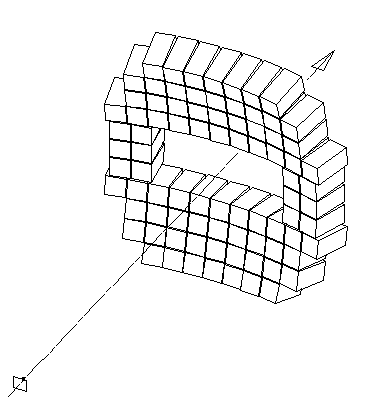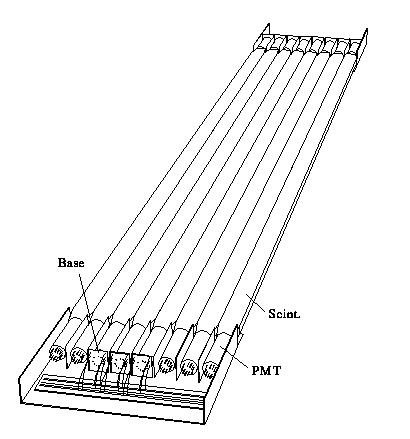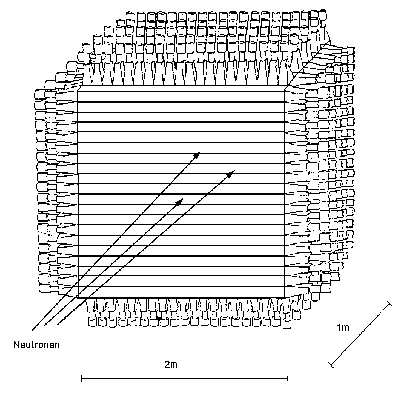 Welcome to the S114 Experiment
Welcome to the S114 Experiment Welcome to the S114 Experiment
Welcome to the S114 Experiment
The ALADIN-spectrometer was designed to achieve full acceptance for projectile fragments produced in heavy ion collisions at SIS energies.
In the first experiment, S031 (July 1990), the fragmentation of Au- projectiles was investigated at 600 AMeV. The second experiment, S022 (October 1991), was performed in collaboration with the MINIBALL/WALL groups from Michigan State University and Washington University, using Au beams with energies of 100, 250, 400 and 600 AMeV. The main emphasis in this experiment was a full coverage of all fragments produced in the interaction.
This experiment, S114, was performed in April and May 1993. During seven weeks we had the opportunity to use beams of Xe, Au, U and Ar at several energies without modification of the experimental setup. It was intended to explore the features of multifragment decay of heavy nuclei over a wider range of projectile and target combinations and over the relativistic regime of bombarding energies.
| PROJECTILE | E/A MeV | TARGET | ||||||
|---|---|---|---|---|---|---|---|---|
| Be | C | Al | Cu | In | Au | U | ||
| Ar | 1000 | x | x | x | ||||
| Xe | 600 | x | x | x | x | x | ||
| Au | 600 | x | x | x | x | x | x | |
| 800 | x | x | x | |||||
| 1000 | x | x | x | x | x | x | ||
| U | 600 | x | x | x | x | x | x | x |
| 1000 | x | x | x | x | x | x | x | |

For each beam particle, its arrival time and its position in the plane perpendicular to the beam direction were measured upstream of the target by the beam counters. Fragments within the geometrical acceptance of the ALADIN magnet of 9.2o horizontally and 4.3o vertically, are detected by the tracking chamber TP-MUSIC III (Time Projecting - MUltiple Samplin Ionisation Chamber) and the TOF-(Time Of Flight)-wall. The charge Z of the fragments is measured by both detectors. Charges Z with Z<15 were resolved individually by the TOF-wall and charges Z>8 by the TP-MUSIC III. The track information for all fragments with Z>=2 allows together with the Z information a determination of the momentum p from the deflection in the known magnetic field. Adding the velocity information measured by the TOF-wall the mass of the fragments can be reconstructed. At E/A = 1000 MeV, these detector system permitted the detection of close to 100% of all projectile fragments with atomic numbers Z>=2. At the lower bombarding energies the angular distributions of some lighter fragments extended beyond the acceptance of the spectrometer but stayed within the acceptance of the Si-CsI hodoscope, which covered the solid angle surrounding the spectrometer acceptance up to angles 16o. The Large Area Neutron Detector (LAND) was positioned close to zero degrees with respect to the incident beam direction and operated in in a caloric mode.
| TARGET | Be | C | Al | Cu | In | Au | U |
|---|---|---|---|---|---|---|---|
| A | 9 | 12 | 27 | 63 | 115 | 197 | 238 |
| Z | 4 | 6 | 13 | 29 | 49 | 79 | 92 |
| Thickness mg/cm2 | 187 +- 2 | 195 +- 8 | 392 +- 3 | 418 +- 2 | 800 +- 10 | 478 +- 9 | 483 +- 9 |

| The Si-CsI(Tl) hodoscope was positioned 60 cm downstream the target and covered the solid angle surrounding the spectrometer acceptance up to angles 16o. Its 84 telescopes with an active area of 30 x 30 mm2 were mounted in close geometry. Each detector consisted of a 300 mycron silicon detector followed by a 6 cm long CsI(Tl) detector which was viewed by a 1 cm2 photodiode from the end face. |



 ALADiN home page
ALADiN home page
 ALADIN data repository
ALADIN data repository